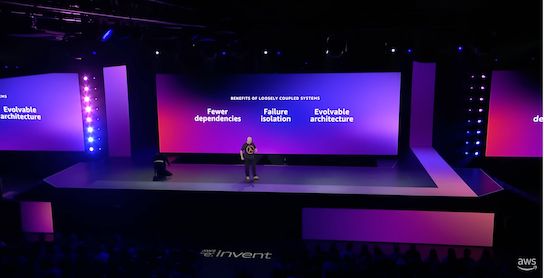Why full control of your SaaS application matters
When developing bespoke software and SaaS product for your business, ownership and control is essential. For any business investing in an application, ensuring ownership over key assets is critical for long-term stability and operational flexibility. Unfortunately, many companies overlook important factors in application ownership and, as a result, could face the risk of being locked in a battle with their developer, agency or vendors over ownership and access.
At Si Novi, we advocate for our clients' ownership of their applications and digital assets. While we specialise in developing custom solutions with a strong AWS focus, we are also committed to ensuring that our clients retain full control, minimising vendor lock-in and supporting their independence.
In this article I evaluate some crucial areas of application ownership to avoid potential risks.
1. Domain name ownership
Your domain name is a cornerstone of your digital presence. It's often your brand name, the primary way customers find you on the web, and it can be used for email and linked to other essential internet services.
But who truly owns this critical piece of your online identity?
Is the domain name registered to your organisation within an account that you own and control?
Many businesses allow third-party developers or agencies to register domain names, creating dependency and risk if those relationships change. Owning the domain name directly means you control the access, renewal, and any potential transfer of this digital asset, reducing the risk of being held back by a third-party. Securing direct access to your domain provider's account is a foundational step to owning your application.
Even if you do own your domain name, you may wish to ensure that domain transfer locks are in place, domain renewal is switched on and that you also control any other similar domains - particularly other valuable TLD's (e.g. .co.uk and .uk) in addition to your primary domain TLD. User accounts for this domain registrar account should be secure, for example with MFA, access restricted to specific personnel and all business contacts details kept up to date.
2. Codebase ownership and intellectual property
The codebase of an application is its heart, and having access to it is crucial. However, while a business may rarely need to access the codebase directly, ensuring ownership of the codebase as intellectual property (IP) of your business is vital.
Do you have a copy of the codebase, and do you own the intellectual property for it?
Without clear IP rights, your ability to maintain, modify, or transfer the application could be limited. Ensure that your development agreement and code license outlines IP ownership, granting you rights to the codebase itself, as well as any additional assets like designs, logos, or documentation. Having a copy of the codebase stored in a secure repository in your company ownership is important, allowing you the flexibility to manage it with another developer if necessary, without restriction or reliance on a single provider.
Even if the developers use their own repo during development work, it's important that the end of a project is marked by the handover of new code to your repository.
3. Cloud hosting ownership
Cloud infrastructure is a critical element of most modern applications, offering scalability and reliability. Yet, having your application hosted on the cloud doesn't mean you're in control - that depends on who owns the cloud account.
Is the application hosted in a cloud vendor account that you control?
For example, if your cloud account is in your organisation's name, you will have control of the Root or Administrator account, and can manage all aspects of the account, including billing, security, and access control.
We develop bespoke web applications on AWS, with an approach that prioritises client control by setting up AWS accounts owned by your business, ensuring you retain full ownership of your infrastructure on the platform.
We access your account securely through permissions you grant us, and we provide guidance on best practices for managing your AWS account, ensuring you have full control over your cloud infrastructure.
4. Email accounts
Closely linked to domain names, the email accounts for a business are an absolutely critial aspect of identity, security and control of the business.
Are your email accounts hosted on a secure cloud platform, encrypted at rest and in transit and secured with Multi-factor authentication?
It's important to ensure that your email accounts are secure, with strong passwords, MFA enabled and that you have control over the accounts. This means that you can reset passwords, add or remove accounts and manage access to the accounts as needed.
It's common for hosting providers to include email as part of a web server, but in many cases the email accounts on the server are stored unencrypted and are accessible by the hosting company staff. This means that your emails are readable by anyone with access to the server - an unacceptable security concern.
If you lose access to your email, consider what other services you would lose access to. Any service for which you use that email address to log in to could be compromised or your access removed.
Email security protocols such as SPF, DKIM and DMARC should all be provisioned to ensure that your email is authenticated, protected against spoofing, and less likely to be flagged as spam by recipients.
5. Third-party dependencies
Many applications rely on third-party services, such as email providers, payment gateways, or analytics tools. These dependencies are often necessary, but they can also introduce risk if not managed properly.
Does your app have dependencies on third-party services like email delivery platforms, and are those accounts under your control?
When setting up third-party services, we advocate for clients to register these accounts themselves to retain independence. By holding these accounts directly, you avoid lock-in with any single development provider and can switch services or providers as needed, ensuring continuity in the event of vendor changes. Retaining control over your third-party accounts reduces the chance of being locked into configurations and give you more control over your application's data.
6. Protecting additional intellectual property
In addition to the codebase, applications typically include other IP assets, such as design elements, trademarks, and even user data structures. As the business owner, you need to consider your rights to these assets and the potential implications for your business if you don't own them outright.
For example, design assets, logos, and branding should be created under clear IP ownership terms. Additionally, unique workflows or data models that are core to your business could be protected, ensuring that these proprietary elements remain yours even if the application is modified or expanded.
Are you the rightful owner of all design, branding, and proprietary elements within your application?
Having full ownership of both the codebase and these additional assets provides peace of mind and strengthens the value of your product as a protected business asset.
7. Advanced administrative access and security protocols
Administrative access and security management are essential to safeguarding your application's integrity and aligning it with industry standards. Ensuring that your organisation holds control over admin-level credentials and security configurations minimises vulnerabilities and strengthens resilience against both internal and external threats.
Do you have direct control over all administrative access and security settings for your application?
Implementing secure access protocols: Secure access protocols are fundamental for maintaining control over sensitive settings, billing, and high-level permissions. Establishing rigorous security measures (such as multi-factor authentication and regular credential audits) prevents unauthorised access, ensuring that only approved personnel can make critical adjustments.
Ongoing security and compliance maintenance: Ownership of administrative settings extends beyond initial setup—it's an ongoing responsibility that impacts data protection, compliance with regulatory standards, and your ability to swiftly address security threats. By centralising control and implementing structured security policies, you reduce the risk of breaches and maintain compliance, safeguarding both your business and its customers.
In summary, building a secure, self-owned administrative structure not only supports your operational independence but also empowers your organisation to maintain strong security and compliance postures over time.
Final thoughts
Application ownership is about more than having access to the software - it's about ensuring long-term control, flexibility, and IP security. At Si Novi, our goal is to develop scalable, high-performing applications while supporting our clients' autonomy. We advocate for client ownership of all core assets, avoiding lock-in and supporting an independent, vendor-neutral environment that empowers business growth.
Taking ownership of these areas enables you to retain full control, avoid costly dependencies, and develop a sustainable, flexible foundation for your software. Whether you're just launching a SaaS product or scaling an established application, safeguarding ownership of your digital assets is essential for success.






